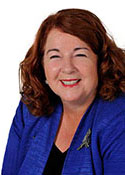Durack
Margin: Liberal 4.0% versus Nationals
Region: Northern Regional, Western Australia
In a nutshell: The Liberals have assumed a secure hold on the northern Western Australian seat of Durack amid a picture of long-term regional decline for Labor.
Candidates in ballot paper order

|
IAN JAMES CAROL MARTIN GRAHAME GOULD MITCHELL SAMBELL MELISSA PRICE LISA COLE |
Covering the northern half of Western Australia and much of the Wheatbelt region to the east and north-east of Perth, the Liberal-held seat of Durack was created when the federation seat of Kalgoorlie – long renowned as the world’s largest electoral district – was abolished at the 2010 election. The state’s interior land mass was then divided between Durack and O’Connor, the latter of which absorbed Kalgoorlie itself. To compensate for the transfer of Kalgoorlie, Durack absorbed 38,000 voters in the Wheatbelt around Merredin and a stretch of coast from Cervantes north to Geraldton, which had previously been in O’Connor. In addition to Geraldton, which is comfortably its largest population centre, the electorate accommodates the mining towns of the Pilbara, notably Port Hedland and Karratha, and the Kimberley region in the far north, including the tourism town of Broome and a particularly large indigenous population. The indigenous vote is the remaining source of substantial support for Labor, the mining towns having become notably more conservative over recent decades.
Durack was held for the first term of its existence by Barry Haase, who won Kalgoorlie for the Liberals in 1998 from Labor-turned-independent member Graeme Campbell. Haase consolidated his hold on Kalgoorlie at the 2001 and 2004 elections, and survived a 3.7% swing to retain a 2.6% margin in 2007. The 2010 redistribution secured his position by adding the strongly conservative Wheatbelt areas and removing relatively marginal Kalgoorlie, a once-Labor voting town that had developed a lean to the conservatives over the previous decade. When Haase announced his intention to retire ahead of the 2013 election, the Liberals preselected Melissa Price, a lawyer who had worked in the mining and agriculture sectors. It was earlier reported that the front-runner was local party branch president Matt Eggleston, but he withdrew citing business commitments and “a potentially life-threatening health scare” – although he had also been fined after being caught driving nearly three times over the legal limit.
The strength of the Nationals’ performance at the state elections of September 2008 and March 2013 suggested a potential threat to the Liberals’ hold on the seat, particularly when Haase retired at the 2013 election. The Nationals’ primary vote increased from 8.0% to 17.7% in 2010, and their candidate in 2013, Shane van Styn, cleared the first hurdle by outscoring Labor with 23.2% of the vote. However, Labor directed preferences to Price ahead of van Styn, and while 57.3% of their supporters defied this instruction, Price’s 38.0% share of the primary vote proved sufficient to prevail over van Styn by 4.0% at the final count. Price was public in her support of Tony Abbott during Malcolm Turnbull’s September 2015 leadership challenge.
Durack will be contested for Labor by Carol Martin, who held the state seat of Kimberley for the party from 2001 to 2013, and for the Nationals by Lisa Cole, the party’s Bruce Rock-based state treasurer.
Analysis by William Bowe. Read William’s blog, The Poll Bludger.


